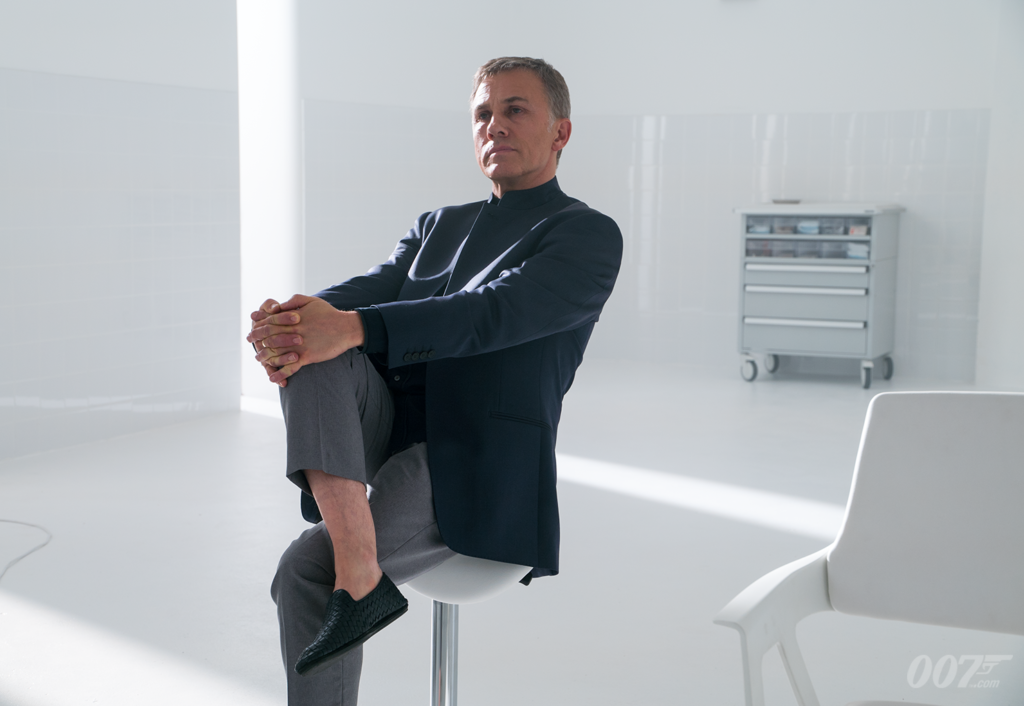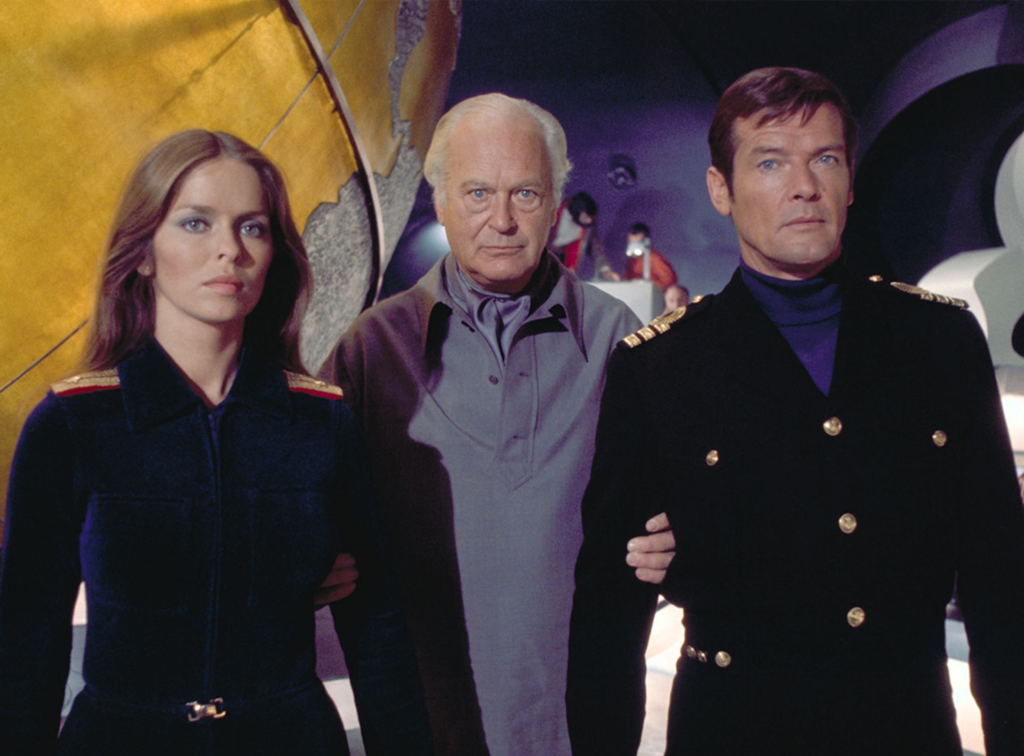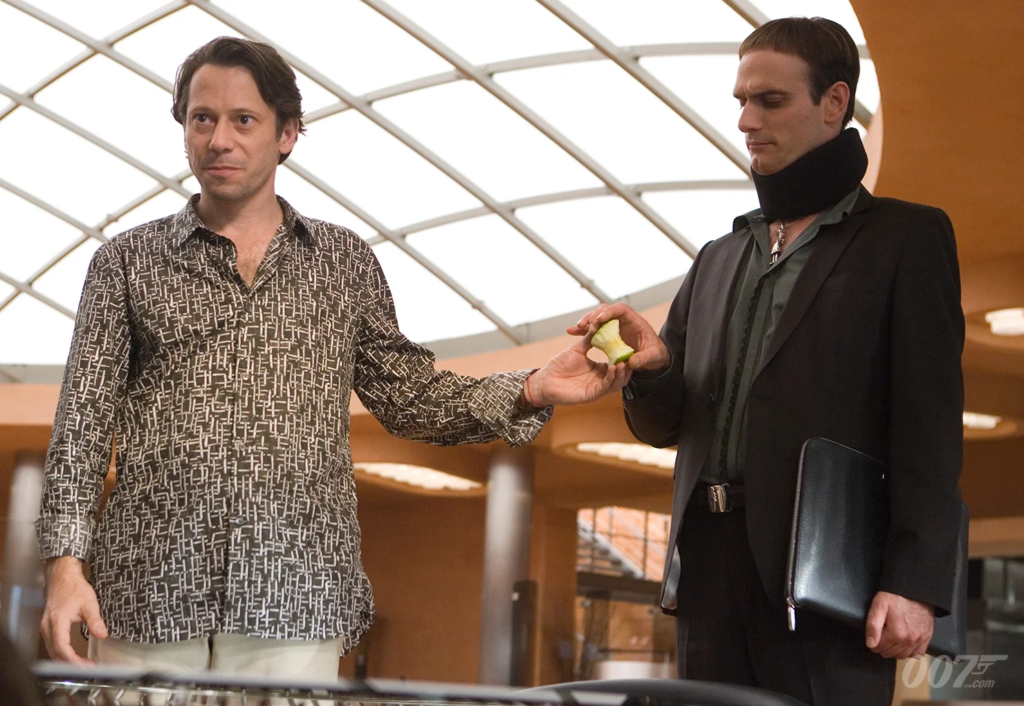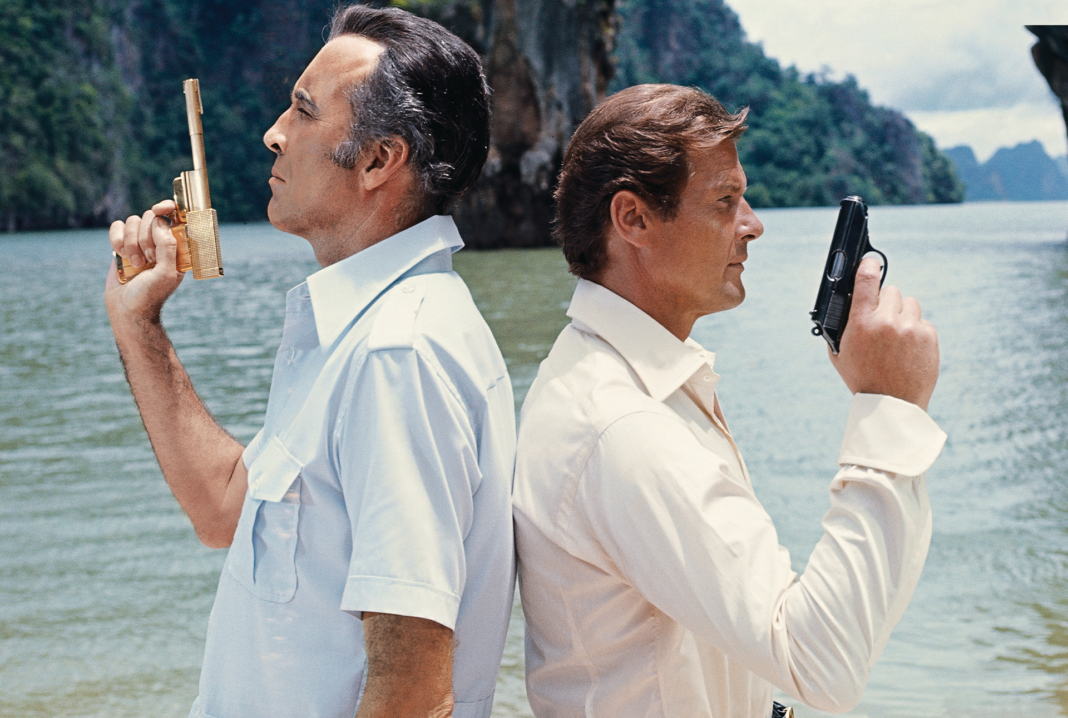When is bad really bad? You will find many lists which rank the best Bond villains, but today, it is time to do the opposite. Welcome to the bottom of the (gun) barrel! Some 007 villains just don’t make the cut, but why is that? If you’re an aspiring megalomanic, beware – below are some flaws that can mess up your scheme to conquer the world and the hearts of Bond fans.
1) Dullness

Now, I am not saying that all 007 villains should be over-the-top megalomaniacs, but they should, at the very least, be lively and unique. In a franchise with twenty-five movies and even more evil-doers, standing out is important!
The most infamous recent example of a bland villain might be Christoph Waltz’s Blofeld (or should I say, Franz Oberhauser). When Waltz was cast, many Bond fans, myself included, were ecstatic, but our hopes were killed by SPECTRE (2015) and didn’t resurrect in No Time to Die (2021). Bringing back 007’s nemesis was never going to be easy, but Waltz’s take on the character simply fails to stand out. He is neither menacing nor nuanced, and his interactions with Bond lack any chemistry. Don’t even get me started on the terrible step-brother plot point, and the fake “reveal” that Oberhauser is Blofeld: family ties are not a trade-off for a personality. Despite being played by a formidable actor, Waltz’s boring take on Blofeld makes for one of the franchise’s weakest bad guys.
Yes, my fellow Bond fans, even a good performer can’t always save a dull character: Louis Jourdan’s Kamal Khan, one of Octopussy’s (1983) main two baddies, is another example. Khan is supposed to be a soft-spoken, charming mastermind, but simply comes across as annoying and inactive throughout the story. Few outside of hardcore Bond fans remember Jourdan’s character, and even fewer would cite him as their favourite baddie!
2) Clichés

This second point might seem obvious, but yes, Bond tropes can be pushed too far. When this happens, we delve into cliché territory and get villains that make us laugh… for all the wrong reasons. Here come the masterminds who want world-domination because they are “so bad”, and effectively end up looking like Dr. Evil.
The perfect example of villainous clichés without an ounce of personality is Toby Stephens’ Gustav Graves. The baddie is just as campy as the film he appears in – Die Another Day (2002). Between his over-the-top giggling, backstory as a North Korean colonel who went through gene therapy (yes), and ridiculous armoured suit, Graves screams at viewers “look how evil I am” – and ends up looking more hilarious than villainous.
A less campy but equally unsuccessful attempt at villainy is Rami Malek’s Safin, one of No Time to Die’s weakest elements. Even Malek could not save the character, and that says a lot about Safin! This baddie has laughable first name – who the hell calls their kid Lyutsifer?!-, unoriginal facial scars, and a plan which aims at using nanobots to kill… some people for… some reason. Safin seems like a compilation of Bond villain clichés, but never gets a distinctive personality to boot. Spoilers ahead: for a man who took out James Bond, Malek’s character is depressingly unoriginal!
3) Lack of interactions with Bond

Most of the best 007 villains share a common trait: they really are expecting Mr. Bond, and have a special relationship with him. Some, like Blofeld or Alec Trevelyan, know the agent well, while others like Franz Sanchez or Raoul Silva share a mutual acquaintance with Bond. Baddies do not need to know James personally, but they do need to spend some time with him.
When this doesn’t happen, it is harder for the audience to appreciate a villain: the best Bond baddies have a unique dynamic with 007, which makes them irreplaceable. Karl Stromberg, played by the excellent Curd Jürgens in the equally excellent The Spy who Loved me (1977), provides the perfect counter-example, and is a replaceable bad guy. Stromberg belongs to an era where 007 villains spent a lot of time in their lairs discussing evil plans. Yet he always made less of an impression on me than Hugo Drax (Michael Lonsdale) in the following Moonraker, who has a fairly similar demeanour. I recently realised that this is down to Stromberg’s lack of interactions with Bond. They only meet briefly before the climax and good Karl is despatched ridiculously quickly, meaning the tension between 007 and him is non-existent.
This is also a problem for twist villains, like Aristotle Kristatos (Julian Glover). Kristatos is only revealed as the main antagonist of For Your Eyes Only (1981) towards the end of the film, after misleading viewers into thinking that smuggler Columbo is the bad guy. As a result, we don’t get to see much of his villainous side – and unfortunately, neither does Bond!
4) Casting mistakes

Now, casting mistakes exist everywhere, but when they happen to Bond villains, they can really impact a movie’s quality. Granted, miscast villains often suffer from other problems, like bad writing, but some actors really don’t seem to be cut out for the role.
I love Joe Don Baker as Jack Wade in GoldenEye (one of my guilty pleasures), but really, nothing will get me to appreciate him as The Living Daylights’ Brad Whitaker. The military leaders-obsessed Whitaker has a unique aesthetic, but Don Baker’s light-hearted interpretation is more suited to a comic relief than to a main bad guy. In all fairness to him, The Living Daylights also suffers from a “villainous overload”, as Whitaker shares the scene with Koskov and Necros, and is given little time to shine.
Mathieu Amalric’s Dominic Greene, leader of evil organisation Quantum, has no such excuse: I don’t doubt that the actor had tons of fun with the role, but his over-the-top creepiness verges into the laughable department – you’ll find yourself wondering if his eyes are staring at you or about to explode. The biggest issue is that despite his wannabe chilling look, Dominic’s villainy is more discussed than shown – an issue which would become common in Craig era villains. As much as I appreciate Amalric as a performer, he clearly isn’t at his best in Quantum of Solace (2008).
5) Bonus: an ultimate villain in a mediocre film

This angry list makes me sound like a ranting megalomaniac myself, so let’s end on a more positive note! Good villains do not suffice to make a good Bond movie, but they can improve the quality of a mediocre film thanks to their quips and screen presence. Two words: Francisco Scaramanga. And just two more: Christopher Lee. With his suave charisma and sleazy personality, Ian Fleming’s step-cousin is the best part of The man with the golden gun (1974). I don’t fully trust the saying “a movie is only as good as its villain”, but Bond villains are undeniably a key element of their film – and even the bad ones deserve a closer look!









